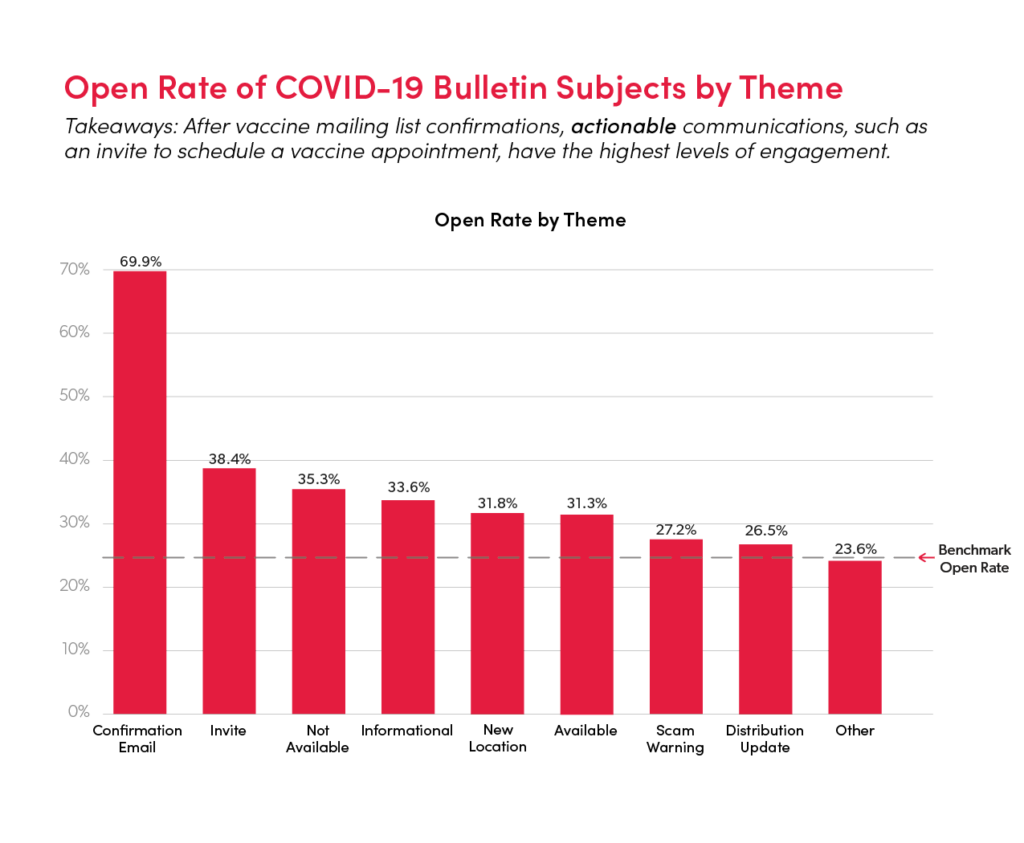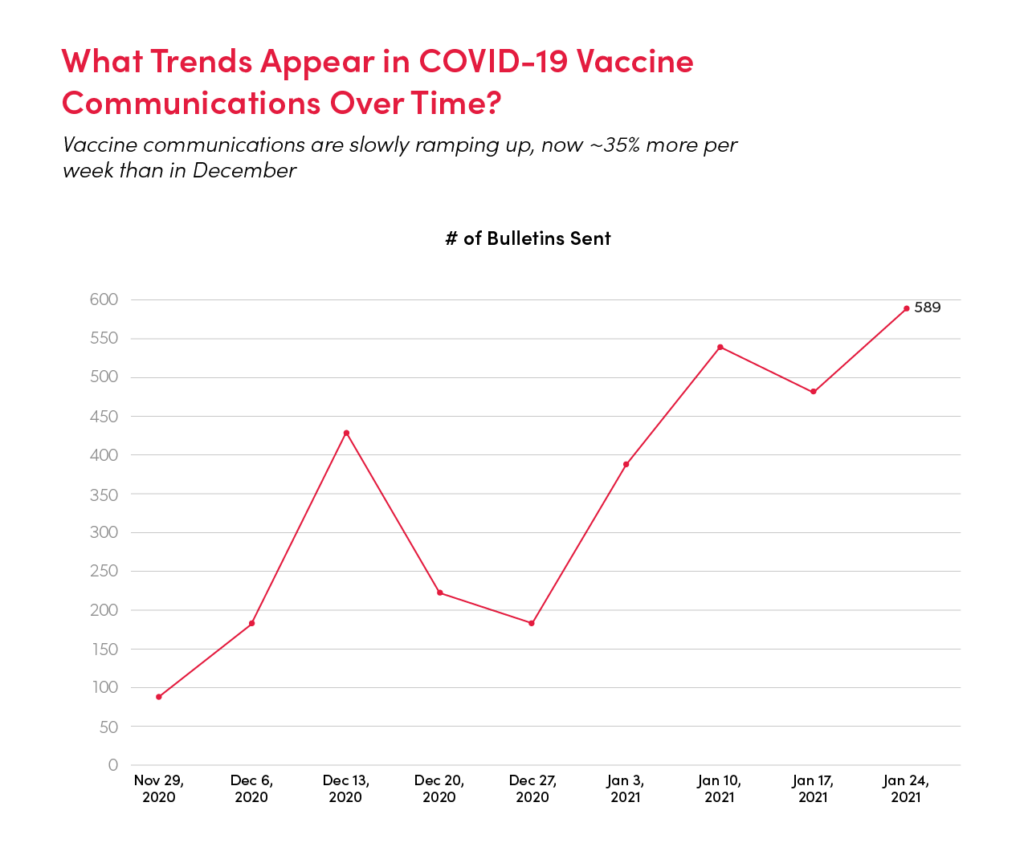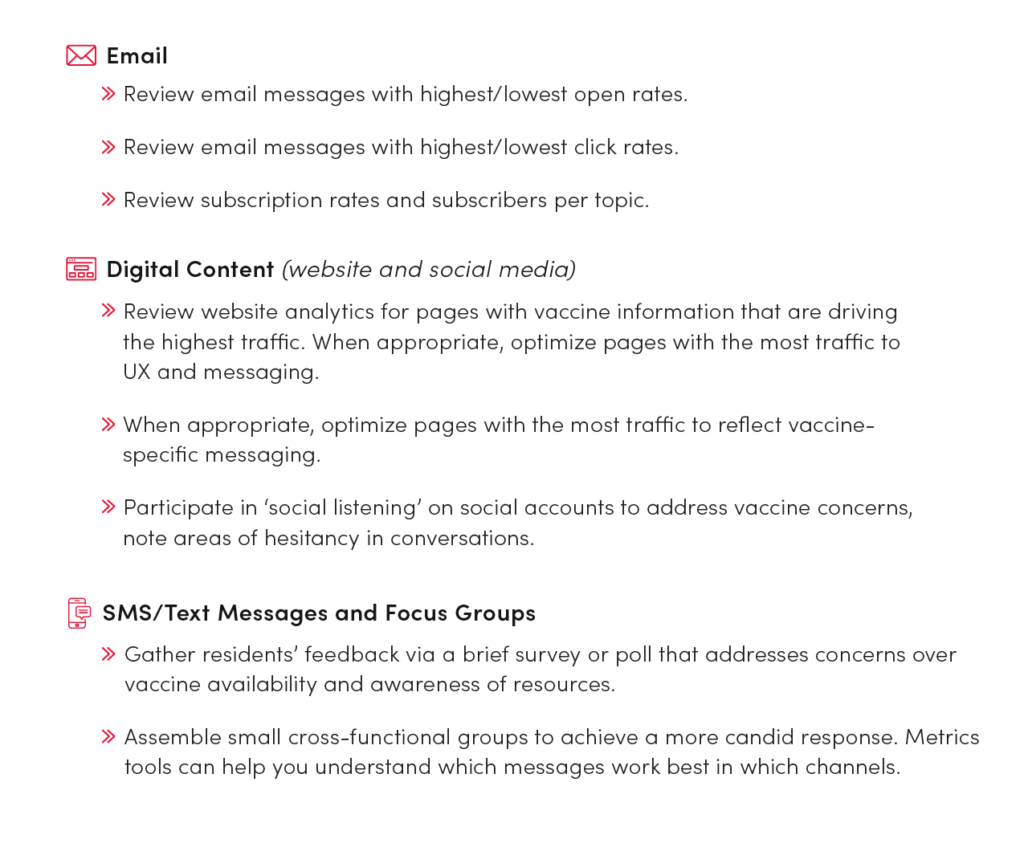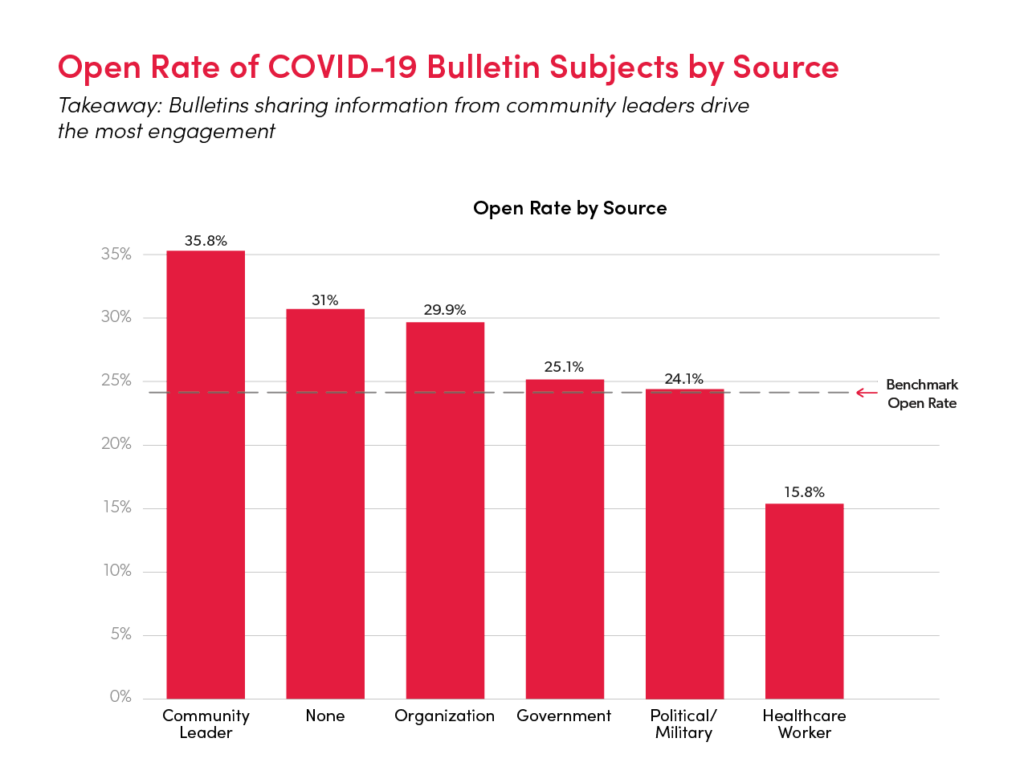Optimizing Gov’t Vaccine Communication Engagement
As with any communications strategy, planning and execution are only the first two steps toward effectively reaching your campaign engagement goals. Taking the time to look at engagement metrics and data to see where adjustments to content can be made can often make all the difference between campaign success and failure.
While some communicators love digging into analytics, others might not see gathering data as a fun part of the job. In the hustle and bustle of multiple campaigns, analytics might be an afterthought or, worse, perceived as a one-time indicator rather than a constantly evolving pattern. As a result, this vital component of digital communications can often be the first corner cut when executing strategies.
As 2020 showed, critical communications around COVID, and now vaccine information, accelerate the urgency of regular communications plans. With the importance and immediacy of COVID vaccine messaging, staying on top of the data and metrics from messaging campaigns also becomes much more necessary. It can not only mean more effective communications, but a greater chance of saving lives.
Fortunately, as states and counties get a better handle on the logistics of vaccine distribution, communications on the topic are increasing, as data from Granicus’ Business Intelligence team shows.
The key now for effective communicators is to understand data from these campaigns and continually revise the approach to messaging and communications. The insights that this data provides, when implemented with attention to overall communications strategy, can lead to an optimal communications experience.
Data-Gathering Action Plan for Engagement
With the timeliness and importance of vaccine-related messaging, understanding where to look for relevant data makes it easier for your communications team to quickly see what is working. Here are some tips for effective data-gathering based on common communications channels:
One insight that reviewing communications from across the variety of federal, state, and local groups using govDelivery to share vaccine-related information shows that citizen engagement increases with messages that come from community leaders as opposed to broader organizations.
Adjusting where or who the message is coming from can impact engagement by almost 6%, a significant number when addressing tens of thousands of people.
Turning Data into Engagement
Once you have both data and subjective insights in hand, you’ll have a more complete picture of the impact of your vaccine-related messaging, its effectiveness, and any indications of changes that need to be made to your engagement and communications strategy.
In the case of vaccine messaging, here are some ways to look for impact:
- Are audience members taking actions similar to your CTA, such as scheduling vaccine appointments?
- Has the mailing list for vaccine information newsletters not only increased but showed improved deliverability and open rates?
- Is the audience more aware of vaccine availability in general?
- Is there any noticeable shift in viewpoint toward trustworthiness of vaccines?
- Has the vaccine hesitancy score moved in any noticeable way as a result of communications?
Review these questions with your overall communications strategy goals in mind. Too often communicators take information gathered from data as an indicator that the goals need to be adjusted.
 Data from Granicus demonstrates that communications with actionable messages show the highest open rate. While common sense would dictate that messages confirming vaccine appointments would be almost double the open rate of other themes, understanding the difference between broad informational messages and specific topical messages (such as “scam warnings” which were opened almost 5% less frequently) can help communicators more finely craft a message that results in engagement.
Data from Granicus demonstrates that communications with actionable messages show the highest open rate. While common sense would dictate that messages confirming vaccine appointments would be almost double the open rate of other themes, understanding the difference between broad informational messages and specific topical messages (such as “scam warnings” which were opened almost 5% less frequently) can help communicators more finely craft a message that results in engagement.
Revisiting and adjusting communications tactics in light of data might only require small tweaks to execution or lead to larger structural considerations. These might include:
- Email subject lines
- Social media CTAs
- Time and cadence of SMS message distribution
- Organization and/or design of website content information
- Adjusting the frequency of website overlays for audience capture
Communicators must remember, though, that addressing each of these adjustments should be done in focused way that remains true to the accuracy and timeliness of vaccine-related information.
Don’t Do Everything At Once
If there are three areas of your communications ripe for adjustment, resist the urge to tackle all of them at the same time. Even with the time-sensitive nature of COVID vaccine information, trying to address more than one tactic per channel at once is a recipe for ineffective communications.
If your data shows a low data open rate, for example, two possible solutions could be adjusting the time of delivery and writing more compelling subject lines. Rather than attempt to accomplish adjustments to both in the next email distribution, focus on one or the other.
As the vaccine process in your audience evolves, data might also reflect a need to change the focus of messaging to attain better engagement. This might mean sharing more “good news” stories or shifting the focus of messaging from awareness to action as vaccine availability increases.
Discover more insights into effective COVID vaccine communications with our COVID Vaccine Guidebook.
Learn more about how govDelivery can provide the detailed data that can make any communications campaign more successful.



